-
Seedshop
-
Feminized
Cannabis seeds -
Autoflowering
Cannabis Seeds -
Regular
Cannabis Seeds -
F1 Hybrid
Cannabis Seeds -
CBD
Cannabis Seeds -
Zamnesia
Cannabis Seeds
-
Top 10’s
- Top 10 Feminized Seeds
- Top 10 Autoflowering Seeds
- Top 10 Regular Seeds
- Top 10 USA Cannabis Strains
- Top 10 Zamnesia Seeds
-
Favourites
- Beginner Strains
- Below 1% THC
- Classic Cannabis Strains
- Cup Winners
- F1 Hybrids
- Fast-Flowering Strains
- High CBD Strains
- High THC Strains
- Mix Packs
- Zamnesia Exclusive Collabs
-
-
Headshop
-
Vaporshop
- Spare Parts & Accessories
- AirVape X
- AirVape XS GO (2021)
- Arizer Air MAX
- Arizer Extreme Q
- Arizer Solo 2
- Arizer V-Tower
- Arizer XQ2
- Boundless CFC 2.0 Vaporizer
- Boundless CFX
- Boundless TERA (V3)
- CRAFTY+
- DaVinci IQ2
- DaVinci IQC
- DaVinci MIQRO
- Dr. Dabber Boost EVO
- Dr. Dabber Stella
- DynaVap Omni 2021
- DynaVap VapCap "M" PLUS 2023
- DynaVap VapCap 'M' 2021
- DynaVap VonG (i) Titanium
- Dynavap The "B" Series
- Eagle Bill
- Firefly 2+
- Flowermate Aura
-
Healthshop
-
Smartshop
-
Shroomshop
-
Growshop
-
Seedshop
All CategoriesSeedshop
-
Vaporshop
All CategoriesVaporshop
- Top 10 Vaporizers
- Spare Parts & Accessories
- AirVape X
- AirVape XS GO (2021)
- Arizer Air MAX
- Arizer Extreme Q
- Arizer Solo 2
- Arizer V-Tower
- Arizer XQ2
- Boundless CFC 2.0 Vaporizer
- Boundless CFX
- Boundless TERA (V3)
- CRAFTY+
- DaVinci IQ2
- DaVinci IQC
- DaVinci MIQRO
- Dr. Dabber Boost EVO
- Dr. Dabber Stella
- DynaVap Omni 2021
- DynaVap VapCap "M" PLUS 2023
- DynaVap VapCap 'M' 2021
- DynaVap VonG (i) Titanium
- Dynavap The "B" Series
- Eagle Bill
- Firefly 2+
- Flowermate Aura
- Flowermate Cap Pro
- Flowermate Slick
- Flowermate V5.0S Pro
- G Pen Connect
- G Pen Elite II
- G Pen Micro+
- G Pen Pro
- G Pen Roam
- Hydrology9 Vaporizer
- Hyer Big-E Rig
- MIGHTY
- MIGHTY+
- PAX Mini
- PAX Plus
- PLENTY
- Pax 3 Vaporizer
- Puffco Peak PRO Smart Rig
- Puffco Peak Smart Rig
- Puffco Plus
- Storm Vaporizer
- The Proxy (Puffco)
- VOLCANO CLASSIC
- VOLCANO HYBRID
- Vape-Lifter
-
Smartshop
All CategoriesSmartshop
- Top 10 Smartshop
- Zamnesia Gift Cards
- After Party
- Aphrodisiacs
- Aromatherapy
- Blue Lotus
- CBD Vape Juice
- Capsule Machines
- Crystals, Gemstones & Minerals
- Dream Herbs
- Drug Tests
- Extracts
- Happy Caps
- Herbal Tea
- Herbs & Seeds
- Incense
- Kanna
- Kratom
- LSA Seeds
- Mescaline Cacti
- Microdosing
- Nootropics
- Relaxing
- Salvia divinorum
- Smart Seeds
- Stimulants
- Supplements
- Tinctures
- Vape Herbs
-
TRIBE
All CategoriesTRIBE
- My Membership
- Spend Gift Points
- Exclusive products
- Earn Extra Gift Points
-
TRIBE
- Early Access
- Refer a Friend
- Information
-
TRIBE
-
Language
 United States
United States
Monday, 21 April and Friday, 25 April 2025*
Cannabis Pheno Hunting: All You Need To Know
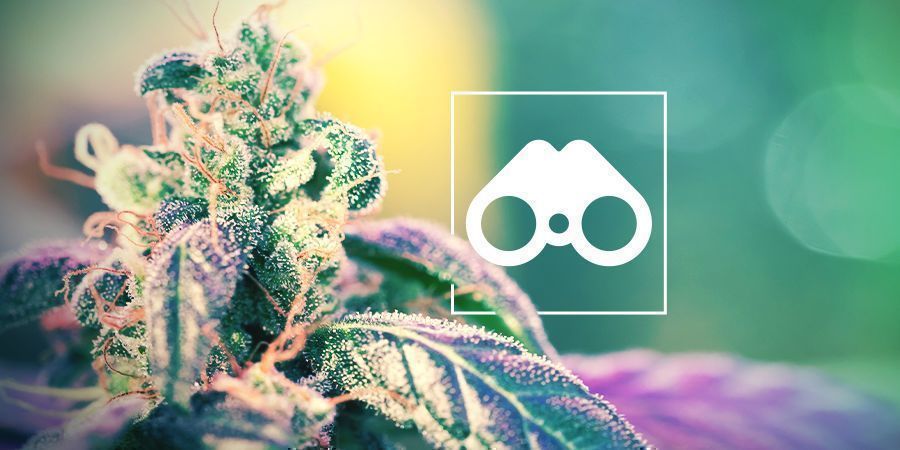
Advanced cannabis growers/breeders use phenotype hunting to only grow the best weed possible. Read on to learn more about pheno hunting, how it works, and how to apply it to your next grow.
WHAT IS PHENO HUNTING?
Pheno hunting is a name cannabis growers give to the process of selecting the best cannabis phenotypes. To better understand pheno hunting and how it works, you’ll need a basic understanding of plant genetics.
When you buy cannabis seeds, you’ll be buying seeds of a particular strain. And while this strain has a general list of traits that make it unique, the plants you grow from your seeds will still be inherently different. That’s because each seed contains a unique genetic blueprint that affects everything from size and structure to aroma and potency. While breeders do their best to stabilise genetics using processes like inbreeding, no two cannabis plants will ever be identical (unless they've been cloned, of course).
If you plant six seeds of Blue Dream, for example, each one of those seeds will grow into a unique phenotype with its own expression of characteristics from its parents, Blueberry and Haze. In order to invest in breeding or growing only the best cannabis possible, you’ll want to sift through your plants and keep those with the unique traits you’re looking for.
WHY SHOULD YOU BOTHER PHENO HUNTING?
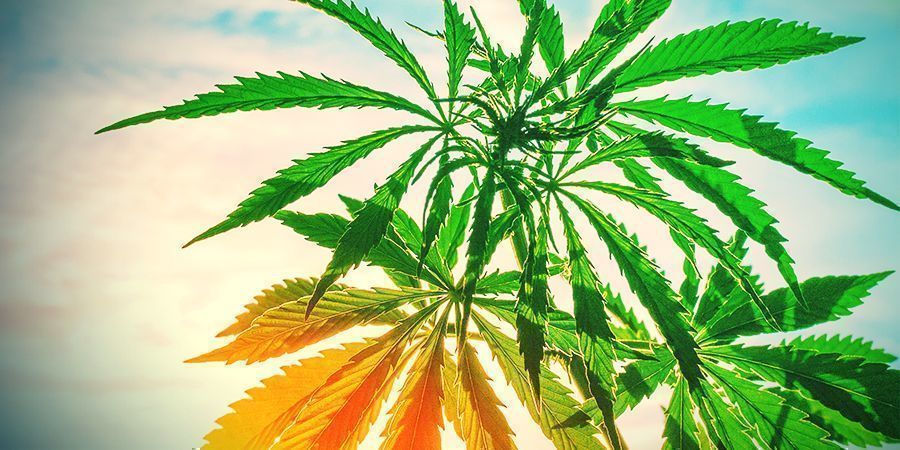
Pheno hunting might sound like something best left to the pros, but it carries a lot of benefits, and even hobby growers can use pheno hunting to grow and breed the best plants.
Most hobby growers/breeders have limited resources. And while it might seem counterintuitive to cull plants from seeds you paid for, doing so can actually help you pool your resources into your best-performing plants.
If you don’t hunt out your best phenos, on the other hand, you risk using your limited resources to grow subpar plants and end up with a mediocre harvest.
HOW TO: A QUICK GUIDE TO HUNTING DOWN THE BEST PHENOTYPES
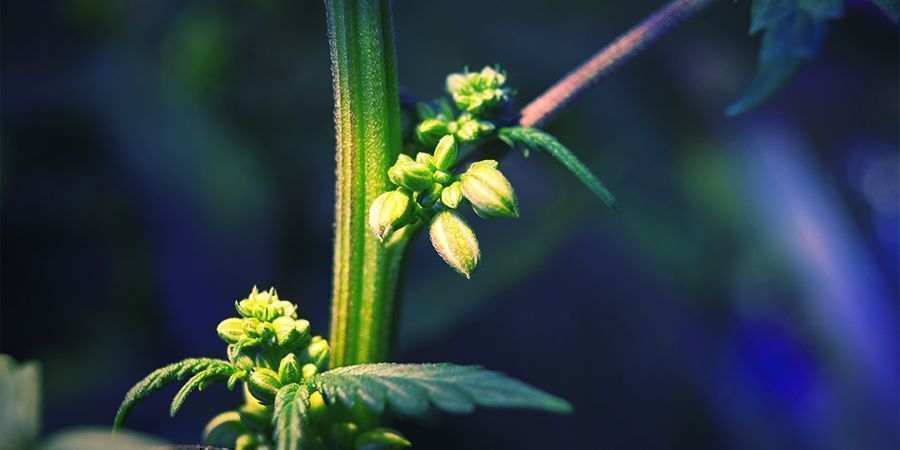
So, you now understand the importance of pheno hunting. But how do you know which plants to cull and which ones to keep? Read on for an easy guide to finding the best cannabis phenotypes.
1. CULL ANY MALES
If you're growing regular seeds, this will be your first step. Any plants with male preflowers need to be culled (or separated if you plan on breeding) early to avoid pollinating your females and ruining your harvest.
2. CONSIDER EACH PLANT’S MORPHOLOGY
Morphology refers to your plant’s physical traits. These cues should be the first thing you look at when pheno hunting (after you’ve taken care of any males, of course). In the first 2–4 weeks of your plant’s life cycle, consider each plant’s:
- Height
- Stretch
- Structure
- Internodal spacing
- Growth rate
- Foliage health
- Root structure (when transplanting)
Keep track of which plants perform best in each of these areas, and also keep in mind which plants are best suited to your grow space. Most indoor growers prefer smaller, stockier plants, but this really comes down to personal preference, skill, and the amount of space you have available.
3. GAUGE HARDINESS
Next, you’ll want to take into account the hardiness of each of your plants. Ask yourself:
- Did any of my plants show signs of stunted growth following transplanting?
- Are any of my plants battling a pest or disease?
- How much nutrients do my plants need? Do some of my phenos require extra feeding to keep up with the rest?
If you’re growing outdoors, also make sure to pay attention to how your plants cope with the local weather conditions, and only keep the best performers.
4. ASSESS HOW PLANTS RESPOND TO TRAINING
If you use LST or HST techniques like topping or super cropping, make sure to check how each plant responds to your favourite style of training. Some plants, for example, may respond better to LST techniques like bending or being tied down, while others might flourish when topped or fimmed. Only select the plants that best suit your grow style.
5. TALLY NUMBER OF BUD SITES
As your plants begin to preflower, keep an eye out for how many bud sites (nodes) each plant produces. Those will more sites will likely develop more flowers, culminating in a larger harvest. Also keep in mind the location of these bud sites, since flowers close to the bottom of the plant will turn out smaller than those near the top of the canopy.
Remember, when weighing out which phenos to keep, it’s important to consider the limitations of your grow space, and your personal preferences as a grower. Just because most growers like working with smaller, bushier plants doesn’t necessarily mean that’s what works best for you.
However, just like most other hobbies, your skills as a pheno hunter will only improve with time and experience. So, start growing and get hunting today.

- France
- Germany
- International
- Italy
- Netherlands
- Spain
- United Kingdom
- United States
You might also like
-
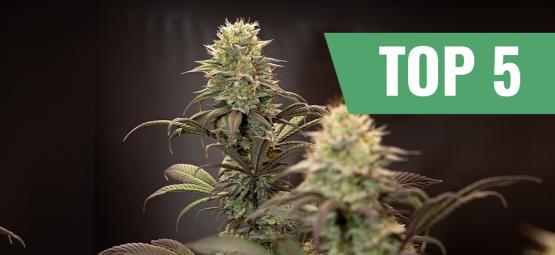
 4 min
4 March 2025
Top 5 high-yielding autoflowering strains
Looking for high-yielding autoflowering cannabis strains? You're in the right place! Autoflowers are easy to grow, fast, and as potent as their photoperiod counterparts. In this article, we highlight ...
4 min
4 March 2025
Top 5 high-yielding autoflowering strains
Looking for high-yielding autoflowering cannabis strains? You're in the right place! Autoflowers are easy to grow, fast, and as potent as their photoperiod counterparts. In this article, we highlight ...
-
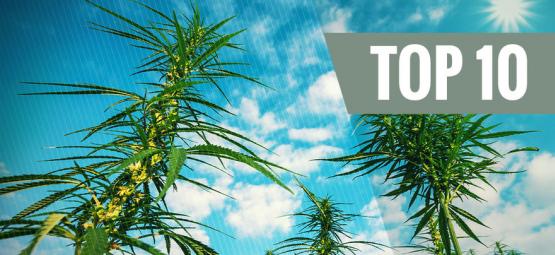
 4 min
19 May 2022
Top 10 High Yielding Feminized Cannabis Strains
Just by picking the right strain, yields can be improved dramatically. All the research, preparation, and cannabis care cannot outweigh the importance of choosing strains with proven genetics. We've c ...
4 min
19 May 2022
Top 10 High Yielding Feminized Cannabis Strains
Just by picking the right strain, yields can be improved dramatically. All the research, preparation, and cannabis care cannot outweigh the importance of choosing strains with proven genetics. We've c ...
-
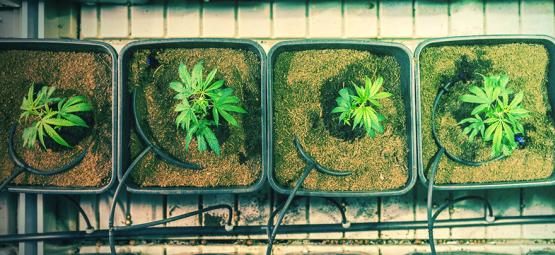
 3 min
13 August 2019
When And How To Transplant Cannabis Plants For Bigger Yields
Next to trimming, transplanting is probably the biggest chore in a grower's life, but it's necessary if you want big, resinous flowers worthy of a High Times centrefold. We'll explain why transplantin ...
3 min
13 August 2019
When And How To Transplant Cannabis Plants For Bigger Yields
Next to trimming, transplanting is probably the biggest chore in a grower's life, but it's necessary if you want big, resinous flowers worthy of a High Times centrefold. We'll explain why transplantin ...
-
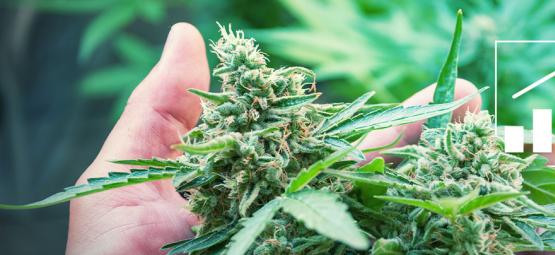
 4 min
10 April 2018
6 Ways To Increase Cannabis Yields
Increasing cannabis yields is of paramount importantance to all growers. With our 6 simple methods even tiny gardens of just one or two cannabis plants can produce a heavy harvest. ...
4 min
10 April 2018
6 Ways To Increase Cannabis Yields
Increasing cannabis yields is of paramount importantance to all growers. With our 6 simple methods even tiny gardens of just one or two cannabis plants can produce a heavy harvest. ...
Categories
-
Seedshop
- Feminized Cannabis Seeds
- Autoflowering Cannabis Seeds
- Regular Cannabis Seeds
- F1 Hybrids
- CBD Seeds
- Zamnesia Seeds
- Top 10 Autoflowering Seeds
- Top 10 Regular Seeds
- Top 10 USA Cannabis Strains
- Top 10 Zamnesia Seeds
- Top 10 Feminized Seeds
- Beginner Strains
- Below 1% THC
- Classic Cannabis Strains
- Cup Winners
- F1 Hybrids
- Fast-Flowering Strains
- High CBD Strains
- High THC Strains
- Mix Packs
- Zamnesia Exclusive Collabs
- Amnesia Seeds
- Blueberry Seeds
- Cheese Seeds
- Diesel Seeds
- Gorilla Seeds
- Haze Seeds
- Kush Seeds
- Purple Seeds
- Skunk Seeds
- White Widow Seeds
- Zamnesia Seeds
- ACE Seeds
- Advanced Seeds
- Amsterdam Genetics
- Anesia Seeds
- Auto Seeds
- Barney's Farm
- Big Buddha Seeds
- Bomb Seeds
- BSB Genetics
- BSF Seeds
- Buddha Seeds
- Bulldog Seeds
- Cali Connection
- Cannarado Genetics
- CannaBioGen
- CBD Crew
- CBD Seeds
- Compound Genetics
- The Dank Seeds
- Dark Horse Genetics
- Delicious Seeds
- Devil Harvest Original
- Dinafem
- DNA Genetics
- Doctor's Choice
- Dr. Underground
- Dutch Passion
- Elite Seeds
- Eva Seeds
- Exotic Seed
- Expert Seeds
- FastBuds
- Female Seeds
- Fenocan
- Flash Auto Seeds
- French Touch Seeds
- Garden of Green
- GeneSeeds
- Genehtik Seeds
- G13 Labs
- Grass-O-Matic
- Greenhouse Seeds
- Grow Your Own (DNA)
- Growers Choice
- Homegrown Fantaseeds
- House of the Great Gardener
- Humboldt Seed Company
- Humboldt Seed Organization
- Kalashnikov Seeds
- Kannabia
- The Kush Brothers
- Light Buds
- Little Chief Collabs
- Medical Seeds
- Ministry of Cannabis
- Mr. Nice
- Nirvana Seeds
- Original Sensible
- Paradise Seeds
- Perfect Tree
- Pheno Finder
- Philosopher Seeds
- Positronics Seeds
- Purple City Genetics
- Pyramid Seeds
- Rare Dankness
- Reggae Seeds
- Reserva Privada
- Resin Seeds
- Ripper Seeds
- Royal Queen Seeds
- Sagarmatha Seeds
- Samsara Seeds
- Seedstockers
- Sensation Seeds
- Sensi Seeds
- Serious Seeds
- Silent Seeds
- Soma Seeds
- Spliff Seeds
- Strain Hunters
- Sumo Seeds
- Super Sativa Seed Club
- Super Strains
- Sweet Seeds
- T.H. Seeds
- Top Tao Seeds
- Vision Seeds
- VIP Seeds
- White Label
- World Of Seeds
- Zativo Seeds
- Seed Banks
-
Headshop
-
Vaporshop
-
Healthshop
-
Smartshop
- Top 10 Smartshop
- Zamnesia Gift Cards
- After Party
- Aphrodisiacs
- Aromatherapy
- Blue Lotus
- CBD Vape Juice
- Capsule Machines
- Crystals, Gemstones & Minerals
- Dream Herbs
- Drug Tests
- Extracts
- Happy Caps
- Herbal Tea
- Herbs & Seeds
- Incense
- Kanna
- Kratom
- LSA Seeds
- Mescaline Cacti
- Microdosing
- Nootropics
- Relaxing
- Salvia divinorum
- Smart Seeds
- Stimulants
- Supplements
- Tinctures
- Vape Herbs
-
Shroomshop
-
Growshop
- Top 10 Growshop
- Top 10 Plant Seeds
- All Seeds
- Cacti
- Chili & Pepper Seeds
- Companion Plants
- Edible Plant Seeds
- Exotic Seeds
- Flower Seeds
- Fruit Seeds
- Herb Seeds
- Interior Plant Seeds
- Microgreens
- Psychoactive Plant Seeds
- Sprouting
- Vegetable Seeds
- Wellness Plant Seeds
- After Harvest
- Climate Control
- Fertilizer
- Grow Tents
- Harvest, Dry & Cure
- LED Grow Lights
- Plant Seeds
- Propagation
-
Merchandise
-
Sale section
Account
Information
Our Offers
Our website won't work without these cookies activated. Therefore functional cookies can't be disabled.























